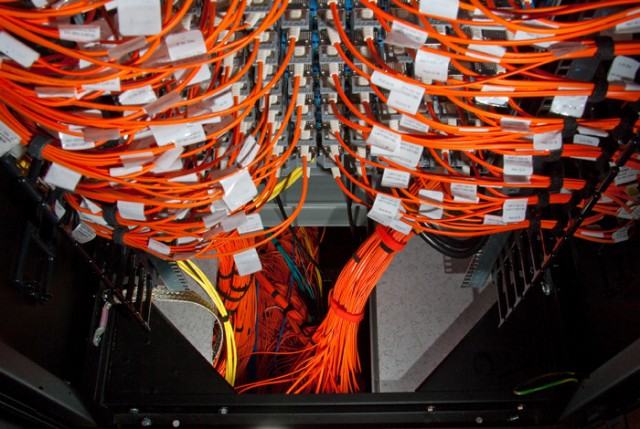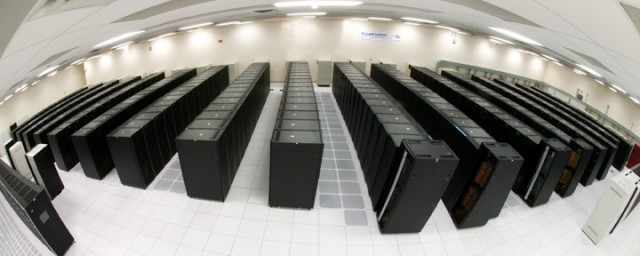
Roadrunner, formerly the world's fastest supercomputer, is being decommissioned today.
Five years ago, an IBM-built supercomputer designed to model the decay of the US nuclear weapons arsenal was clocked at speeds no computer in the history of Earth had ever reached. At more than one quadrillion floating point operations per second (that's a million billion, or a "petaflop"), the aptly-named Roadrunner was so far ahead of the competition that it earned the #1 slot on the Top 500 supercomputer list in June 2008, November 2008, and one last time in June 2009.
Today, that computer has been declared obsolete and it's being taken offline. Based at the US Department of Energy's Los Alamos National Laboratory in New Mexico, Roadrunner will be studied for a while and then ultimately dismantled. While the computer is still one of the 22 fastest in the world, it isn't energy-efficient enough to make the power bill worth it.
"During its five operational years, Roadrunner, part of the National Nuclear Security Administration’s Advanced Simulation and Computing (ASC) program to provide key computer simulations for the Stockpile Stewardship Program, was a workhorse system providing computing power for stewardship of the US nuclear deterrent, and in its early shakedown phase, a wide variety of unclassified science," Los Alamos lab said in an announcement Friday.
Costing more than $120 million, Roadrunner's 296 server racks covering 6,000 square feet were connected with InfiniBand and contained 122,400 processor cores. The hybrid architecture used IBM PowerXCell 8i CPUs (an enhanced version of the Sony PlayStation 3 processor) and AMD Opteron dual-core processors. The AMD processors handled basic tasks, with the Cell CPUs "taking on the most computationally intense parts of a calculation—thus acting as a computational accelerator," Los Alamos wrote.

Enlarge / Lots and lots of server racks.
"Although other hybrid computers existed, none were at the supercomputing scale," Los Alamos said. "Many doubted that a hybrid supercomputer could work, so for Los Alamos and IBM, Roadrunner was a leap of faith… As part of its Stockpile Stewardship work, Roadrunner took on a difficult, long-standing gap in understanding of energy flow in a weapon and its relation to weapon yield."
Roadrunner lost its world's-fastest title in November 2009 to Jaguar, another Department of Energy supercomputer combining AMD Opterons with Cray processors. Jaguar hit 1.76 petaflops to take the title, and it still exists as part of an even newer cluster called Titan. Titan took the top spot in theNovember 2012 supercomputers list with a speed of 17.6 petaflops.
Supercomputing researchers are now looking toward exascale speeds—1,000 times faster than a petaflop—but major advances in energy efficiency and price-performance are necessary.
Petaflop machines aren't automatically obsolete—a petaflop is still speedy enough to crack the top 25 fastest supercomputers. Roadrunner is thus still capable of performing scientific work at mind-boggling speeds, but has been surpassed by competitors in terms of energy efficiency. For example, in the November 2012 ratings Roadrunner required 2,345 kilowatts to hit 1.042 petaflops and a world ranking of #22. The supercomputer at #21 required only 1,177 kilowatts, and #23 (clocked at 1.035 petaflops) required just 493 kilowatts.
"Future supercomputers will need to improve on Roadrunner’s energy efficiency to make the power bill affordable," Los Alamos wrote. "Future supercomputers will also need new solutions for handling and storing the vast amounts of data involved in such massive calculations."
After Roadrunner is shut off today, researchers will spend a month doing experiments on "operating system memory compression techniques for an ASC relevant application, and optimized data routing to help guide the design of future capacity cluster computers." After that, the cluster will finally be dismantled, the end of the world's first petaflop supercomputer.
http://arstechnica.com


No comments:
Post a Comment